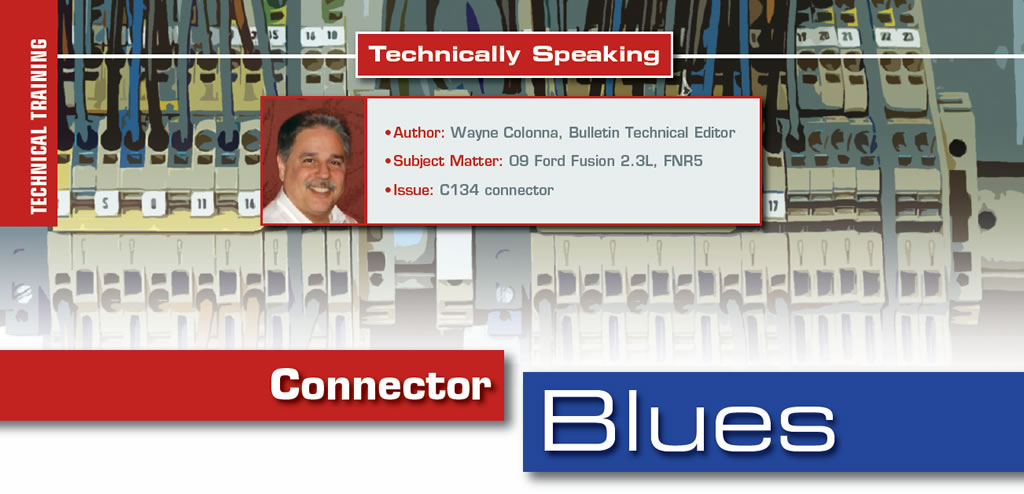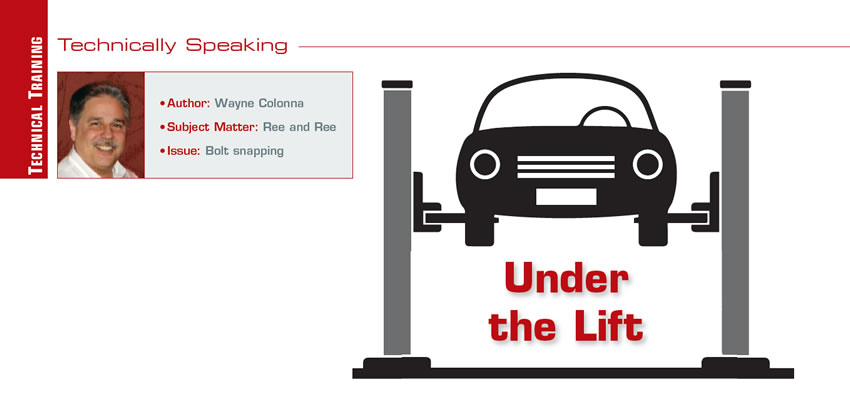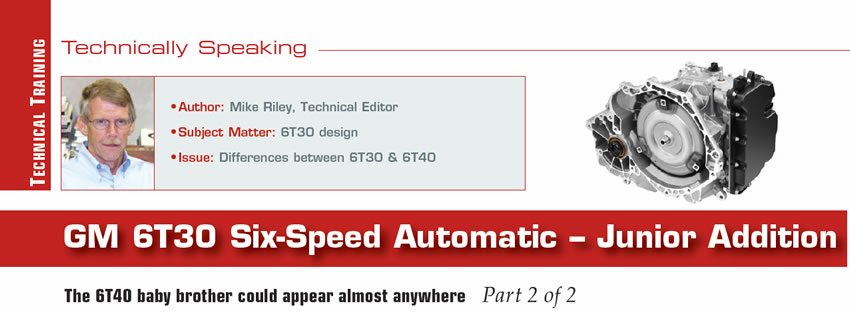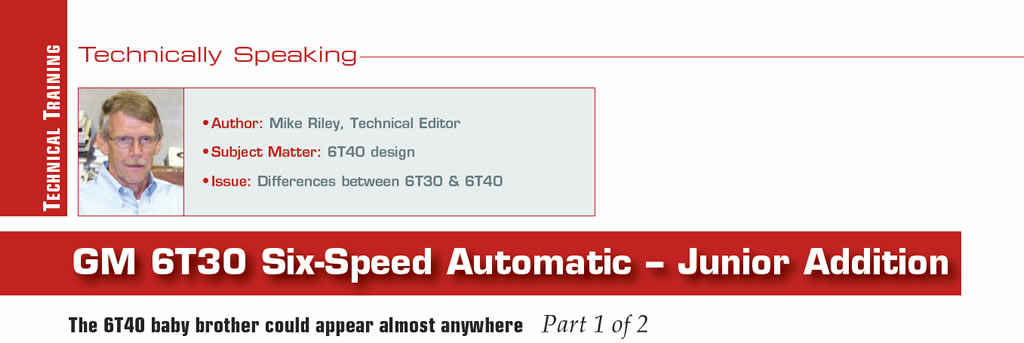Connector Blues
Wayne Colonna focuses on water contamination of the C134 connector in an FNR5.
A 2009 Ford Fusion 2.3L coupled to an FNR5 transmission comes in to a shop with a host of solenoid codes, gear ratio codes and speed-sensor codes…

CVT’s 3-Second-Rule Delay
Jatco’s CVT2, CVT7 and CVT8 have their own unique way of controlling garage shifts into gear. Although each of these transmissions utilize a torque converter, great lengths went into designing a strategy that would prevent harsh drive or reverse engagements to prevent damage to the variator (primary and secondary pulley assembly).

Torque Reduction
Engine torque reduction is a computer strategy that has been used in vehicles for many years now. When the selector lever is used to place the transmission into reverse or drive from either park or neutral, a command is given to reduce engine torque. This assists in providing a smooth engagement into gear. Likewise, torque reduction is commanded to take place during each upshift for smooth shifting. This strategy can also be used in vehicles equipped with adaptive cruise control or when traction control becomes activated.

It’s the Little Things
The phrase, “It’s the little things,” is often times pared with “that count” or “will get you.” Both are true when it comes to a loss of reverse after rebuilding a 4F27E. It is easy to overlook the little things that count and it will be the little thing that gets you.

Updated 6L80/90 Output Shaft Assembly
During model year 2012, Chevrolet and GMC trucks equipped with the 6L80/90 transmission received an updated output-shaft assembly. The previous output-shaft assembly was comprised of a separate output shaft, output carrier ring gear, ring-gear spacer, output carrier internal front gear and snap rings as seen on the left in figures 1 through 3. This required the use of a specific style output transmission speed sensor also shown on the left in figures 4 and 5.

Under the Lift
As one being involved with diagnosing transmission issues, developing technical information for seminars and bulletins as well as writing technical repair manuals, the one aspect of the transmission business I rarely think about is the R&R process. In Canada I hear them say “Ree and Ree” which is a nice quick way of describing the process of removing and re-installing the transmission. The lack of attention on this aspect of the transmission business does not indicate that it is insignificant. In fact, removing and re-installing transmissions is a critical aspect of the business. It is hard work and requires talent to do the job right.

Mercedes 722.6: No Upshift Condition
The frustrated owner of a 1996 Mercedes S500 called to complain that his vehicle had been acting up for some time and he was at his wits end. Apparently, he and others had taken a swipe at repairing the problem with little success so the vehicle was towed into the shop to get a look with a fresh pair of eyes, so to speak.

Toyota A750E Electrical Component Variations
Toyota has been producing automatic transmissions almost from the beginning of time achieving various levels of success in durability within their fleet. Over the years there have been incidents of Toyota developing transmissions for other car companies, domestic and overseas.

Ford TorqShift 6 Component Upgrades
Unlike the 6R60 / 6R80 models that were a carryover from the ZF6HP26, Ford started with a clean sheet of paper in the development of the 6R140. To say that this unit is a beast would be an understatement due to the fact that it weighs more than 300 pounds.

GM 6T30 Six-Speed Automatic – Junior Addition – Part 2
After General Motors and Ford collaborated on the GM 6T70 and Ford 6F50 transmissions, they recognized the need for another transmission to accommodate lighter-duty vehicles.

GM 6T30 Six-Speed Automatic – Junior Addition – Part 1
During development, the GM 6T70 and Ford 6F50 basically fell off the same sheet of paper resulting in a noticeable amount of interchangeability of various components. One key difference between the two models is that GM chose to go with a mechatronic (TEHCM) valve body design, whereas Ford stuck with the traditional external TCM (PCM). Another variable between the GM and Ford transmissions were the dreaded cushion springs that have been tweaked over the years. Both designs accommodate the larger vehicles equipped with higher output engines and both have received continuous changes and upgrades.

Computer Reprogramming
There was a time, long ago, when the owner of a vehicle would experience a transmission problem and roll into a repair facility to have it addressed. The issue would be diagnosed, the offending components would be repaired or replaced, and once done final adjustments would be made either before or after a thorough road test. Fine tuning was limited to the adjustment of a throttle rod or cable, turning a screw a couple of times on a modulator, or changing a spring on a governor. So much for the good old days!

